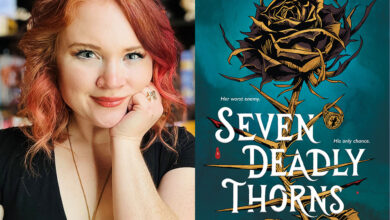Uncovering the Soundtrack of the Upper Delta Region: Q&A with Author M…

There has always been cross-pollination of the genres. The Civil War was a significant breaking point: Emancipation freed African American talent into the public arena. And musicians back then, they could do it all; versatility and a wide portfolio were expected. After the war, out of necessity and opportunity, Black and white musicians integrated and began learning from each other. Ragtime evolved into jazz, blues fed into country, and all of it collided into early rock ’n’ roll and rockabilly. Over the past decade, I have piecemealed the story together, building databases of information and logging over 2,000 hours a year.
What is the second volume, Part Two? How does it expand on the story, and what did your approach on this topic look like?
The second part heavily emphasizes the 1940s through the 1960s, diving into the local joints from Memphis to Cape Girardeau and even Perry County. I saved the blues and all of my interviews of the rockabillies for the second book. The first book just teased the rockabillies, whereas the second volume unfolds the stories. The story wraps up around 1964, when the Beatles came to the Ozarks. I’ve catalogued over 35,000 PDFs — everything from full nonfiction books to old advertisements and newspapers — and created a solid timeline.
What have you learned from your research, and what insights would you like to share?
Spanning the two books, I’ve traced 140-plus years of history, from flatboats to airplanes, television and Elvis Presley. A vast majority of American greats have traveled up and down the Mississippi River, playing in and around these small towns.
Around 2015, electronic search and digital archives of old newspapers changed the game for me. Even in the last five years, access to digital photos, photos that were previously only available through physical books and library archives, has opened a completely new layer of history. Ironically, I thought I’d become a fiction writer, but this, the real history, is much more fascinating to me. Electronic search helped me make a name for myself, first through football and now rockabilly. It still takes a lot of work, like any research method, but if you dig in and commit to the work, the stories will tell themselves.
What do you hope readers — especially those from Missouri and the Mid-South — take away from your work, specifically Part Two?
I hope readers in the area walk away with pride, with who we are and what we’ve been — not just individual pride, but community pride. I think we’ve lost some of that in America, so I research and write these stories for the people. I want readers from Southeast Missouri, Northeast Arkansas and the broader Mid-South to realize how important this region is and how much it has to teach us. We’ve had great people of all backgrounds come before us and lay foundations of such positive endeavors. If we understand our history, we can be more constructive about how we deal with the realities of today. These are tough, talented people here, and we should be proud. I love Southeast Missouri for everything it has done for me.
Chaney’s Part One, “River Shows, Blues, Ragtime, Jazz and Country Music: It all equals rockabilly, part one” is available on Amazon and directly through his independent press, Four Walls Publishing. Part Two, titled “It All Equals Rockabilly: The conclusion” is forthcoming in 2027. For updates, readers can find Chaney on Facebook or contact him via email at mattchaney@fourwallspublishing.com.
Source link




